Jones Stephens introduces Tankless Water Heater Service Kits, a collection of six SKUs with ¾” and 1” sizing and IPS and SWT connections. These convenient kits include high-quality forged brass valves and select models include a pressure relief valve and gas connector – all in one box. Jones Stephens’ tankless water heater kits provide quick Read more
tankless water heaters
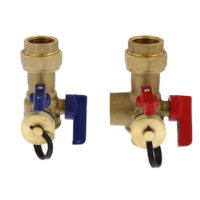
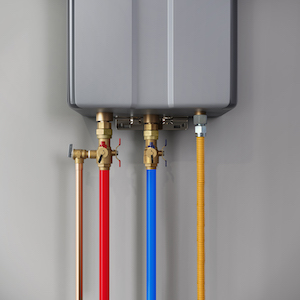 Jones Stephens introduces Tankless Water Heater Service Kits, a collection of six SKUs with ¾” and 1” sizing and IPS and SWT connections. These convenient kits include high-quality forged brass valves and select models include a pressure relief valve and gas connector – all in one box.
Jones Stephens introduces Tankless Water Heater Service Kits, a collection of six SKUs with ¾” and 1” sizing and IPS and SWT connections. These convenient kits include high-quality forged brass valves and select models include a pressure relief valve and gas connector – all in one box.
Jones Stephens’ tankless water heater kits provide quick and simple installation and a leak-free connection. Identifying hot and cold water systems is made simple with their color-coded red and blue handles. Their strong, forged brass construction reduces the risk of pinhole leaks, and their stems are blowout-proof—ensuring system durability and safety.
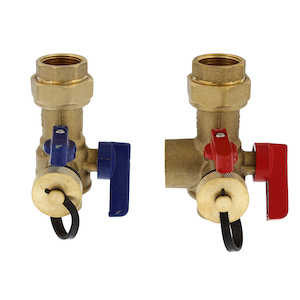 Made to the highest quality standards, Jones Stephens’ tankless water heater kits are cUPC and IAPMO approved. They are lead law compliant and meet NSF/ANSI standards.
Made to the highest quality standards, Jones Stephens’ tankless water heater kits are cUPC and IAPMO approved. They are lead law compliant and meet NSF/ANSI standards.
For more information: Jones Stephens | WE GOT IT.
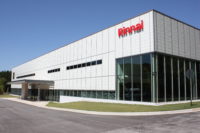
As trusted hot water partner for all things installation, prevention and maintenance Rinnai America Corporation, the leading brand of tankless water heaters, now offers a unique National Accounts program to its commercial business partners. The program is designed to be a turnkey hot water solution for its commercial customers and includes both repair and replacement services. Rinnai’s one-stop Read more
 As trusted hot water partner for all things installation, prevention and maintenance
As trusted hot water partner for all things installation, prevention and maintenance
Rinnai America Corporation, the leading brand of tankless water heaters, now offers a unique National Accounts program to its commercial business partners. The program is designed to be a turnkey hot water solution for its commercial customers and includes both repair and replacement services.
Rinnai’s one-stop hot water experience for hotels, restaurants and other commercial customers provides 24/7, 365 hot water support to ensure businesses can function at their highest level. Regardless of whether the water heater is a Rinnai unit or not, plumbers will be deployed from Rinnai’s vast network to assess the situation and repair product. If a replacement is needed, the plumber will work with the customer to identify the best solution for their business. And to ensure the customer has the right solution, the program delivers pricing quotes and 100% guaranteed system sizing. Additionally, in order to provide a worry-free solution for its customers, Rinnai handles all aspects of the businesses’ hot water from selecting the plumber to processing payments for the job.
“Hot water is a necessity and a vital part of our customer’s business,” said James Woodruff, Senior Director of Commercial Business for Rinnai America Corporation. “We offer our expertise in water heating as a service to our customers that is turnkey and simple. This allows them to worry less about their business operations while we ensure their hot water is there when they need it.”
Since its inception, the program has grown, now handling anything from small businesses to franchises with up to 1,000 locations. To cater fast services to the growing demand for tankless water heaters, as well as Rinnai’s growing clientele, the company has developed a vast list of contractors nationwide, who are readily available to give quotes and complete jobs when required as part of the Rinnai family.
“Through our extensive contractor network, we can coordinate our premium response program and offer a service that is much-needed by our customers in the industry,” said Rinnai America Corporation’s President Frank Windsor. “We are committed to Creating a healthier way of living, and providing a worry-free, turnkey solution for our customers is a great step towards achieving that commitment.”
To learn more about Rinnai’s National Accounts program, visit www.rinnai.us.
Rinnai America Corp. announced the acquisition of Industrias MASS, the leader in the commercial water heater market in Mexico. This acquisition marks the first by Rinnai America Corporation and follows the launch of its Strategic Business Initiative announced earlier this year, meant to accelerate the company’s presence via acquisitions and partnerships Read more
Rinnai America Corp. announced the acquisition of Industrias MASS, the leader in the commercial water heater market in Mexico. This acquisition marks the first by Rinnai America Corporation and follows the launch of its Strategic Business Initiative announced earlier this year, meant to accelerate the company’s presence via acquisitions and partnerships.

Acquisition is the first step of company’s bold plan to expand in Latin American commercial water heating market Rinnai America Corporation, the leading manufacturer of tankless water heaters in North America, announced today the acquisition of Industrias MASS, the leader in the commercial water heater market in Mexico. This acquisition marks the first by Rinnai Read more
Acquisition is the first step of company’s bold plan to expand in Latin American commercial water heating market
Rinnai America Corporation, the leading manufacturer of tankless water heaters in North America, announced today the acquisition of Industrias MASS, the leader in the commercial water heater market in Mexico. This acquisition marks the first by Rinnai America Corporation and follows the launch of its Strategic Business Initiative announced earlier this year, meant to accelerate the company’s presence via acquisitions and partnerships.
Founded in 1964, Industrias MASS is the leading manufacturer of commercial water heaters in Mexico, with penetration of approximately one-third of the overall commercial segment. With an 86,000 square foot plant and more than one hundred employees across the country, Industrias MASS also specializes in the production of water treatment systems and the manufacturing of commercial tanks that collectively integrate advanced technology, locally manufactured materials, and a best-in-class service network. Their client base spans hospitality, healthcare, food service and other commercial verticals served by offices in Mexico City, Leon, Merida, Monterrey, Guadalajara, and Mazatlán.
“Acquiring Industrias MASS is a critical step in our commitment to the Latin American market,” said Frank Windsor, President of Rinnai America Corporation. “Our goal is to build upon the success of Industrias MASS by further investing in the company, its people, and products as a platform for growth. Through our shared pledge to innovation, as well as a complementary set of products, we’ll fuel growth while also delivering on our brand promise of Creating a healthier way of living®.”
This strategic acquisition will enable Rinnai America Corporation to establish its local presence in Mexico, for both manufacturing and distribution, through partnership with a clear and established market leader. Industrias MASS’ complimentary product line also includes products which Rinnai has not historically offered, such as water treatment, allowing the company to expand its footprint and offer a broader product portfolio.
In addition, as part of its commitment to success in the region, Rinnai America Corporation has named Victor Molgado as its first Mexico General Manager. Molgado has more than 25 years of experience in local, regional, and international manufacturing operations and was most recently the General Manager for a large joint venture institution in Mexico.
“I’m excited about the opportunity to accelerate Rinnai’s expansion in Mexico in partnership with Industrias MASS,” Molgado said. “The combination of Industrias MASS’ market dominance and Rinnai’s technology and global market leadership unlock great potential for the Mexican market and is the clear choice to accelerate the company’s growth strategy throughout Latin America.”
“The experienced team at Industrias MASS, as well as the in-facility leadership under Victor’s direction, are critical parts of our strategy to capture the growth opportunities we see in the market,” added Windsor.
Through this acquisition Rinnai America Corporation will extend its presence across Latin America, building upon the success of its existing operations in Brazil. The company plans to advance in the region through a combination of organic growth, investment and new alliances to achieve a dominant market share in the commercial water heater market.
To learn more about Rinnai, visit www.rinnai.us.
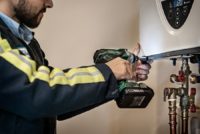
Three considerations for right-sized tankless installations–and increased customer satisfaction Propane tankless water heaters use less energy, cost less to operate, and produce fewer emissions than other options, which is why a growing number of homeowners are requesting these systems. As contractors know, determining the right configuration for their projects isn’t always straightforward. Whether considering a Read more
Three considerations for right-sized tankless installations–and increased customer satisfaction
Propane tankless water heaters use less energy, cost less to operate, and produce fewer emissions than other options, which is why a growing number of homeowners are requesting these systems.
As contractors know, determining the right configuration for their projects isn’t always straightforward. Whether considering a single unit for the whole home or multiples that run in tandem, knowing how to predict demand is key to giving customers a setup that meets their performance and cost expectations.
Here are three factors to consider when right-sizing a tankless system for projects.
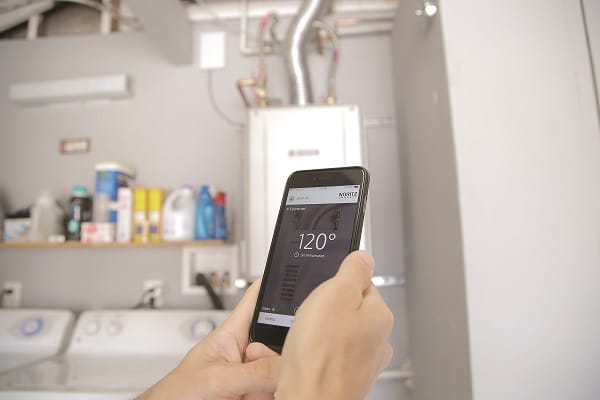
How much water will the customer need?
Knowing how many people will live in the home, who will be using hot water, and for what purposes is the first step toward installing a system that will fulfill their specific needs. Additionally, understanding a customer’s lifestyle and habits–when they shower, how often they do laundry, and whether they expect to install radiant heating–can help determine expected peak demand times.
Take stock of the number and type of appliances and systems requiring hot water and note their water delivery rates. To calculate peak demand, the Department of Energy (DOE) recommends counting the number and gallons per minute (GPM) rate of faucets, showers, and appliances that could be in use in the home at any given time. Features such as in-floor radiant heating and spas can considerably raise a home’s hot water demands. Propane tankless water heaters provide an endless supply of hot water, averaging roughly 222 gallons per hour, compared with an average first-hour delivery rating of just 62 gallons per hour for electric storage tank models.
How much will the water need to be heated?
It’s important for contractors and installers to know the difference between outdoor ground temperatures and the desired indoor hot water temperature. That will reveal how much the water will need to heat and, therefore, how quickly the unit can deliver hot water.
For example, a typical shower head delivers 2.5 GPM, so a 9.4 GPM unit would run three to four showers depending on the inlet ground water temperature. According to the DOE, the average groundwater temperature across the U.S. is 50 degrees. In most cases, water should be heated to at least 120 degrees, so the home will need a tankless unit that can heat 2.5 GPM by 70 degrees. Lower flows can be heated to a bigger temperature rise and higher flows to a smaller temperature rise. Most propane or natural gas tankless water heaters on the market can handle a rate of 5 GPM at a 70-degree temperature rise. As fixtures are added, demand on the system increases and that 5 GPM rating can quickly get overwhelmed.
While a tankless unit will provide hot water almost instantly at the unit, the water still has to travel to the faucet, so location of the units is an important part of system design. Oftentimes, two smaller units, each placed closer to the end use site, can provide the project a higher level of satisfaction than one large or two smaller units installed in a single location. This also provides some redundancy if a unit or fixture needs to be serviced.
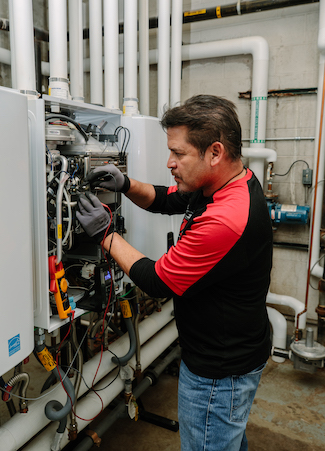
What can the home accommodate?
Peak demand scenarios are why contractors shouldn’t assume an undersized system will cover their client’s full range of needs. Oversizing isn’t as big of a concern with tankless systems. While oversizing a traditional tank water heater would result in significant wasted energy over the life of the unit, tankless units vary their flow rates based on demand and, therefore, having excess capacity doesn’t necessarily mean a tankless system is using more energy.
New projects can more easily accommodate tankless units at the point of use than existing homes, which are often designed for a central tank system–and may be better suited for one or more units installed in the basement. For most projects, one unit is sufficient. Multiple units may be used to handle larger loads or as homeowners scale up in the future as their hot water needs change. Because of the popularity and dependability of propane tankless water heaters, new products are available on the market that would allow customers to have “multiple” heaters in a single cabinet, or on a single rack that comes to the project ready for installation making system design easier still.
To determine the optimal number of tankless units for a home, help customers understand their consumption habits and how the system can be sized to meet their expectations. Determine peak demand and gauge actual usage and lifestyle habits. Then, compare prices for systems that meet those needs relative to a client’s budget. Put in as much capacity as those factors will allow to balance cost and comfort. By simply installing a propane system, customers will see optimal cost savings. That’s because propane tankless water heaters offer reduced energy costs, a lower total cost of ownership, and a longer service life compared with other options. Notably, propane tankless systems can reduce energy costs by up to 50 percent and eliminate standby energy loss from the tank.
To learn more about propane water heating systems, visit Propane.com/Water-Heating.
 Bryan Cordill the director of residential and commercial business development for the Propane Education & Research Council. He can be reached at bryan.cordill@propane.com.
Bryan Cordill the director of residential and commercial business development for the Propane Education & Research Council. He can be reached at bryan.cordill@propane.com.

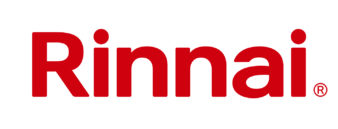 As trusted hot water partner for all things installation, prevention and maintenance
As trusted hot water partner for all things installation, prevention and maintenance